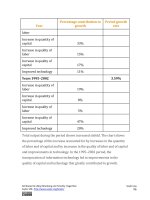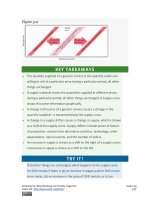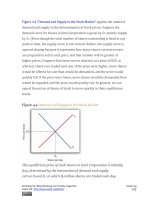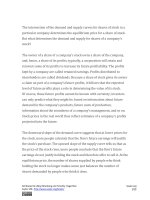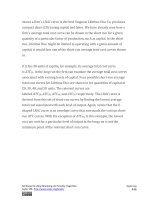Authors libby rittenberg 891
Bạn đang xem bản rút gọn của tài liệu. Xem và tải ngay bản đầy đủ của tài liệu tại đây (412.66 KB, 1 trang )
Figure 17.3 Comparative Advantage in Roadway and Seaside
Roadway’s production possibilities curve is given in Panel (a); it is the
same one we saw inFigure 17.1 "Roadway’s Production Possibilities
Curve" and Figure 17.2 "Measuring Opportunity Cost in Roadway".
The production possibilities curve for a second hypothetical country,
Seaside, is given in Panel (b). If no trade occurs between the two
countries, suppose that Roadway is at Point A and that Seaside is at
Point A′. Notice that the opportunity cost of an additional boat in
Roadway is two trucks, while the opportunity cost of an additional
boat in Seaside is 0.2 trucks. Clearly, Seaside has a comparative
advantage in the production of boats.
Each country produces two goods, boats and trucks. Suppose no trade
occurs between the two countries and that they are each currently
operating on their production possibilities curves at points A and A′
in Figure 17.3 "Comparative Advantage in Roadway and Seaside". We will
assume that the two countries have chosen to operate at these points
through the workings of demand and supply. That is, resources have been
guided to their current uses as producers have responded to the demands
Attributed to Libby Rittenberg and Timothy Tregarthen
Saylor URL: />
Saylor.org
891
